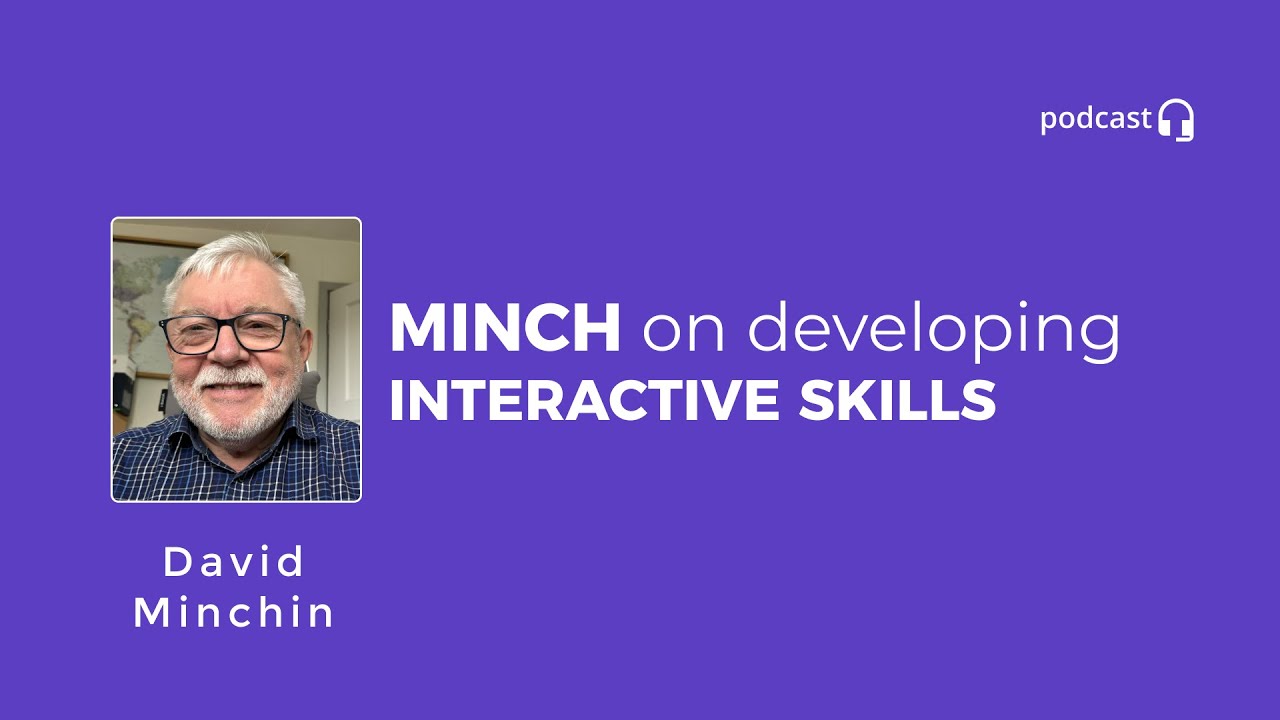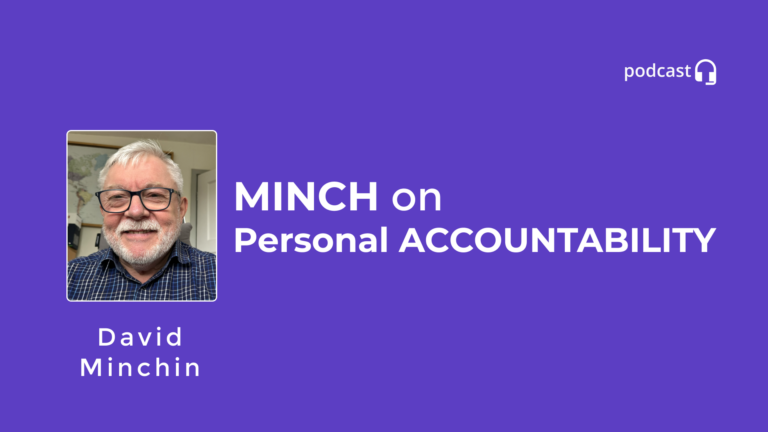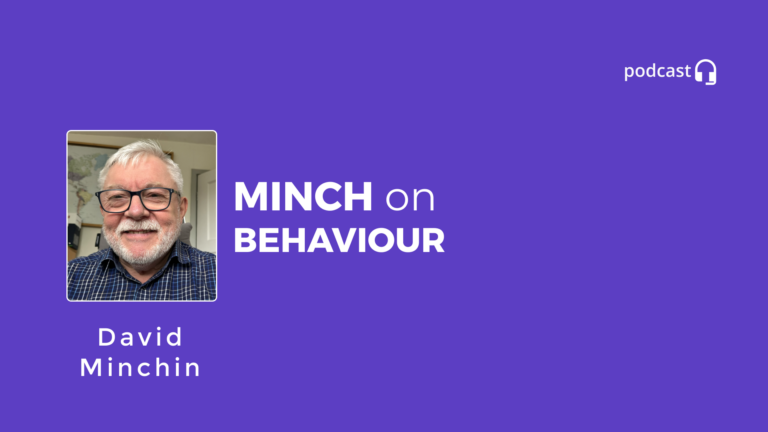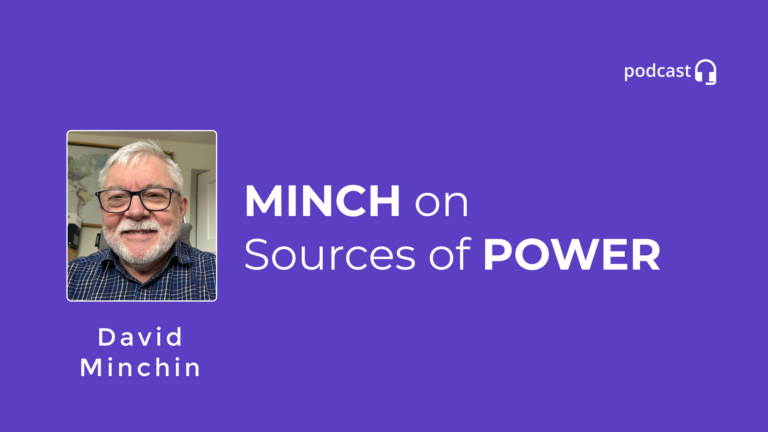Skills of Interaction
by David Minchin
So, just to remind you my podcast ‘MINCH on …’ is designed to cover topics that may be helpful as a reminder to some, and also for those who just haven’t thought about the topic before.
Many of the topics apply not only to working life, but also to social interaction, answering some of the questions about why people do and say certain things in different situations.
So, I was asked … Would you like to attend a course? So glad that I said yes!
This Episode provides information about developing interactive skills. Based on my experience of attending two 5 day courses ‘back in the day’ they were called Profile Training 1 & Profile Training 2.
These residential courses were held a month apart commencing 09.00 on the Monday and finishing at 15.00 on the Friday. Monday to Thursday the days ended around 21.30 with breaks for lunch and evening meals. So pretty intense, but probably two of the best courses I have ever attended! … As a participant.
The quality of the structure and content was down to Peter Honey, Occupational Psychologist and management trainer. (Remember Learning Styles, Honey & Mumford).
There were 14 participants on both courses from different organisations I attended with a colleague from my organisation. Let’s call him Keith …
We started with introductions and we went through a process to identify our learning styles … I came out as a reflector .. there is a MINCH on Learning Styles episode that I produced a while ago. Peter Honey’s style of facilitation was outstanding and everything we did involved practical interaction with each other and an outstanding amount of feedback from other participants and of course Peter himself.
The Content of the First Course
Anyway, here is a flavour of the different sessions that were laid out in the first course timetable.
Analysis of behaviour styles, objective setting exercises, Behaviour Shaping, Non-verbal behaviour. Numerous ‘Fish Bowl’ exercises those taking part in a meeting or an exercise were in the ‘Fish Bowl’ and all those outside were observers preparing feedback. The exercises were very realistic … although as individual we may have been given an objective to achieve in a meeting or a case study discussion, that was the only element of role play. It was crucial that we remained ourselves … so I was still David even though sometimes I adapted my behaviour to the situation and the people. Well that was easier said than done sometimes … but that was the ‘learning’.
So there was an amazing amount of feedback from everyone. With some guidance from Peter and comments on the feedback often flavoured with his unique style of humour.
Why am I telling you all this?
In a future episodes I want to share with you how such a lot of effort and time went into experiencing interaction with other people. Getting an amazing amount of feedback, then deciding what to change and what not to.
We were all learning different techniques and methods. The time flew by … never bored, always challenged.
Observing and Giving Feedback is a Skill.
Needs to be learnt and practiced …
On the first course we started with some basic feedback, so as mentioned earlier a series of tasks were set up. We were then either taking part in the task or purely observing, however even if you were taking part you were asked to provide feedback on each of the other people involved in the task at the end. Then all the roles were reversed. At the end the written feedback was then collated and provided to each individual. The amount of time spent observing, preparing the feedback then delivering it was extensive but it worked.
So, … picture a form with rows and columns. On the first row a left hand column with a description ‘Has a lot to say’ and the far right hand column a description ‘Has less to say’ so obviously the opposite and in between from left to right columns with ratings 1 to 5 so 3 would be in the middle – So, with 14 participants on the course my sheet for each of the categories I had 13 marks somewhere on the 1 to 5 ratings.
Here are some examples of my feedback
Has a lot to say or has less to say I had a rating of 2 close to the ‘has a lot to say’ is that good?? That’s the point … It depends !
Which is a word Peter used a lot ..If I had asked ‘was it appropriate for me to be speaking a lot?’ Peter would say ‘Well you see .. it depends.
Friendly and warm/distant and cool I was a 2 again
Lots of non-verbals/few non-verbals a 2 again
Asks people for their opinions / Doesn’t invite other peoples opinions a 2 again
Talks loudly/ talks quietly – in the middle as a 3
Produces off – the – top of the head ideas/ Produces thought through ideas … I was a 1 here … which is ok in brainstorming session but not all the time … one lady participant was excellent she always had thought through stuff.
I will leave it there, you get the gist … there were 18 elements in total this was the first feedback exercise and they became more sophisticated as the course developed and into the second course profile 2.
Behaviour Catergories
We then went onto doing some work on Behaviour Catergories .. as follows:
Firstly 3 Initiating behaviours such as:
Seeking Ideas – Simply asking other people for their ideas
Proposing – Putting Forward Ideas (possible courses of action) as statements
Suggesting – Putting forward ideas as questions ( such as ‘How about doing this?’)
Then 4 Responding behaviours
Building – developing and building on someone else’s idea.
Disagreeing – Explicitly disagreeing with something someone else has said.
Supporting – Agreeing with someone’s ideas or comments.
Difficulty Stating – Pointing out the snags or difficulties with something someone else has said.
Finally 2 Maintaining behaviours.
Seeking Clarification – Asking other people for further clarification or information.
Clarifying / explaining information – Giving information, opinions and explanations.
We then did face to face exercises using these behaviours but just before that we were asked to identify which categories were being used in 15 separate statements.
Here are just a few examples which aren’t necessarily connected to each other.
Alan said:
‘Has anyone got any ideas on what we can do to improve progress on the ‘Wainwright job’’
I would suggest thats Seeking Ideas.
Chris said:
‘Hmm I don’t see where the extra staff are going to come from.’
Got to be difficulty stating.
Sandra said:
‘How about negotiating a new completion date with the Wainwright people?’
This is suggesting
Brian said:
‘Now there’s an idea and we could sugar the pill by offering to extend our follow-up service by an extra six months.’
This is an example of building In future episodes I will share with you lots more from my experience of this topic and continue to demonstrate that these techniques are not just things we all naturally do. In themselves they are learned behaviours that we can all continue to improve and use to our advantage and the advantage of others.
Anyway, that it for now – Thank you for listening, keep learning and stay curious.







